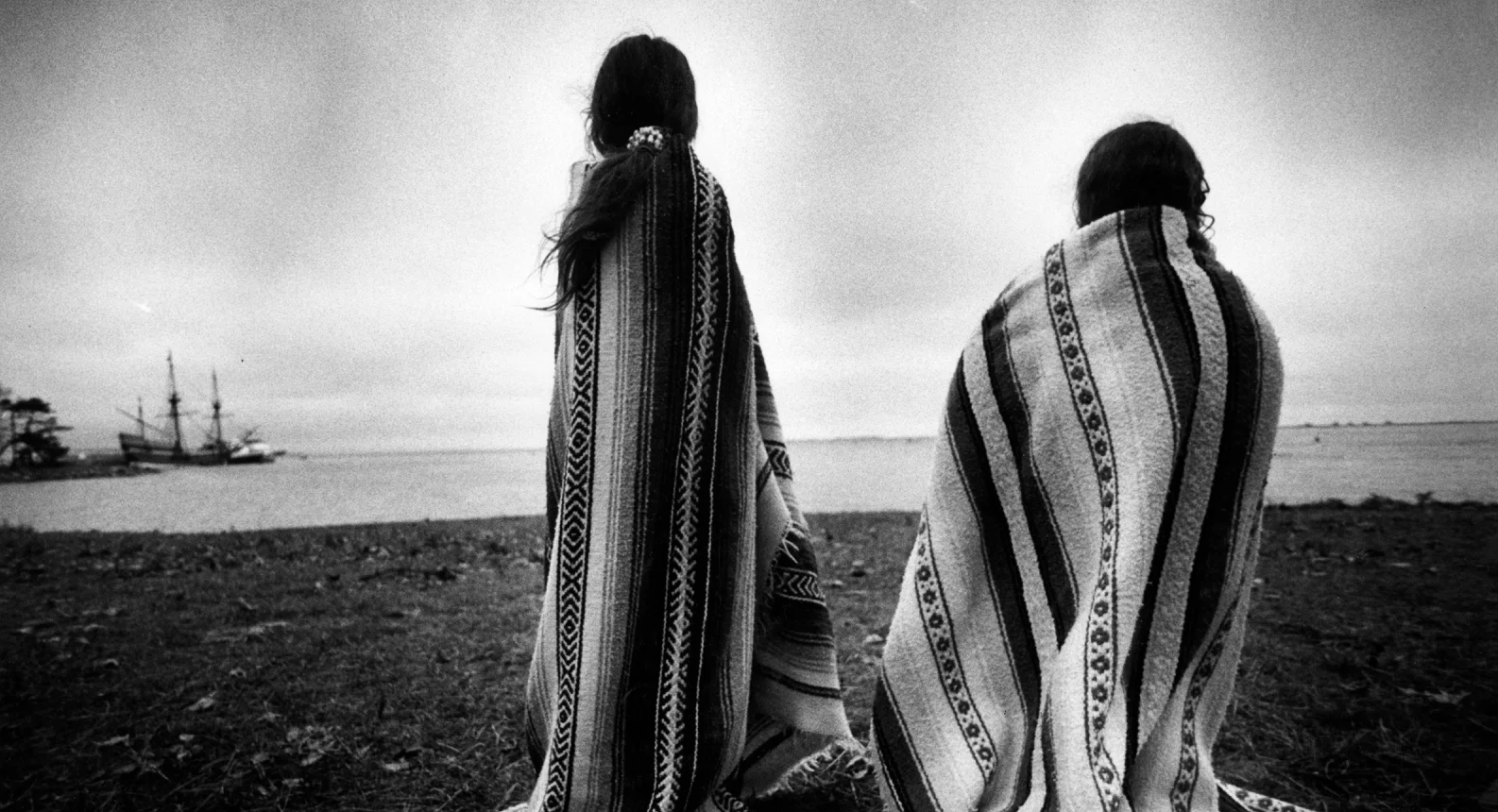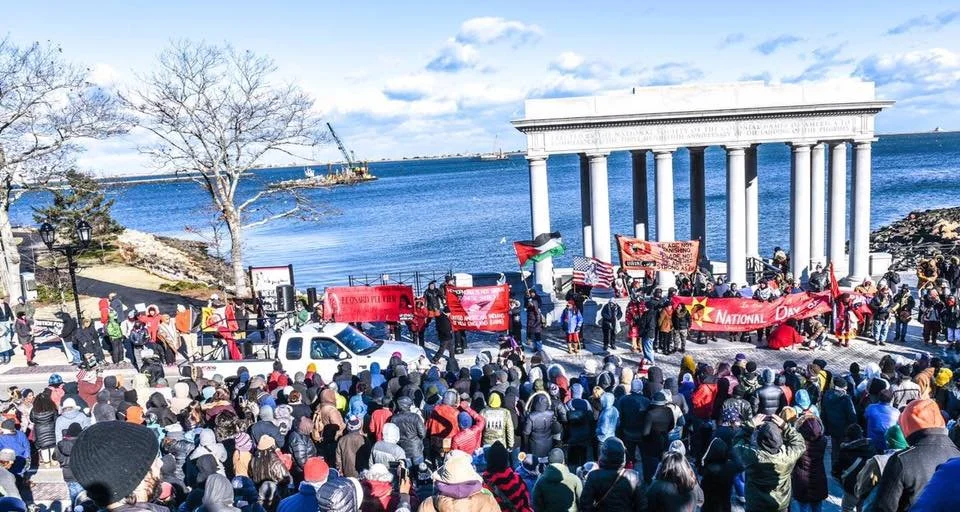The Truth About the First Thanksgiving
Every fall is a season of resistance for Indigenous peoples.
Weetoomoo Carey, 8, left, and Jackolynn Carey, 5, Wampanoag Nipmucs from Mashpee, look across to the Mayflower replica anchored near Plymouth Rock on Nov. 26, 1991. They were with a group of Native Americans gathered for a day of mourning in response to the Pilgrims' Thanksgiving. (Image: Time)
We encourage you this year to celebrate Thanksgiving and also Truthsgiving, a concept coined by Indigenous activist Christine Nobiss to dismantle common misunderstandings about Thanksgiving with the truth.
“The Pilgrims had hardly explored the shores of Cape Cod for four days before they had robbed the graves of my ancestors and stolen their corn and beans.”
- Wamsutta Frank James, Wampanoag activist and organizer of the National Day of Mourning
The 51st annual National Day of Mourning will take place at Plymouth Rock on November 24, 2022. In 1970, United American Indians of New England declared US Thanksgiving Day a National Day of Mourning. This came about as a result of the suppression of the truth. (Image: Uaine.org)
Here’s the full story - gathered by Jackie Menjivar, Content Writer at DoSomething.Org - of what happened on the “first thanksgiving” in 1621 between the Pilgrims of Plymouth Colony and the Wampanoag* tribe in present-day Massachusetts that includes Native American voices as the original tale of this story removed and erased their voices.
There’s no evidence that the Wampanoag people were even invited in the first place. An account from the time said 90 members of the Wampanoag tribe were present and makes no mention of invitations. Some experts believe that these 90 men were an army, sent by Wampanoag leader Ousamequin at the sound of gunshots (which turned out to be a part of the celebration).
In their first encounter with the Wampanoag people, the Pilgrims stole from the tribe’s winter provisions -- it wasn’t until later that Ousamequin formed an alliance between the groups. Even then, the alliance really only existed because the Wampanoag people were ravaged by diseases brought by European colonizers in the years prior. It was less about intercultural harmony and more about survival (made necessary by the actions of these settlers).
That first harvest was followed by deadly conflicts between colonizers and Native people, including (but definitely not limited to) the Wampanoags. The Europeans repaid their Native allies by seizing Native land and imprisoning, enslaving, and executing Native people.
Following “Thanksgiving” celebrations by European settlers often marked brutal victories over Native people, like the Pequot Massacre of 1636 or the beheading of Wampanoag leader Metacom in 1676.
*Today, the Wampanoag make up two federally recognized tribes, the Mashpee Wampanoag Tribe and the Wampanoag Tribe of Gay Head (Aquinnah).

